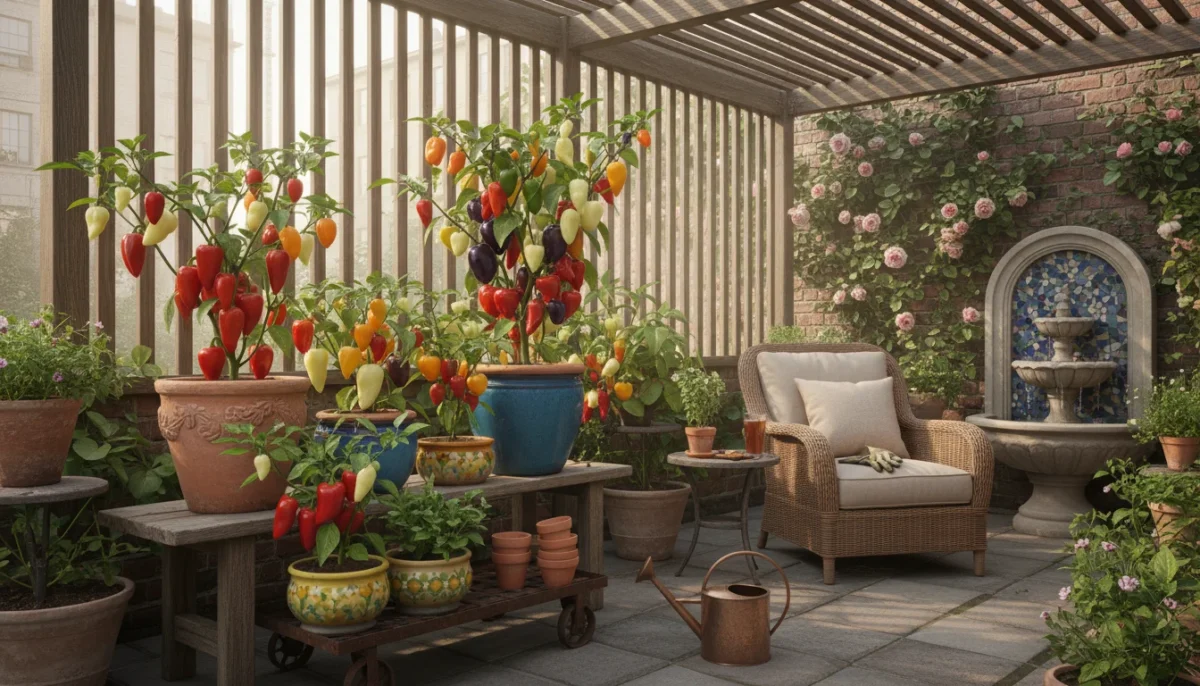As the days shorten and a crisp chill fills the air, you likely find yourself admiring your potted pepper plants, still laden with beautiful, albeit green, fruits. For many small-space gardeners, this late season harvest presents a familiar dilemma. You have invested time, care, and anticipation into these plants, and now, with the threat of the first frost looming, you want to ensure those vibrant peppers reach their full, colorful potential. Giving up on your pepper plants now means missing out on delicious, homegrown flavor. Fortunately, you have several effective strategies to encourage ripening peppers, safeguarding your bounty and extending the harvest in small gardens. This guide provides practical, actionable insights to help you get those green peppers to turn red, yellow, or orange before winter truly sets in.
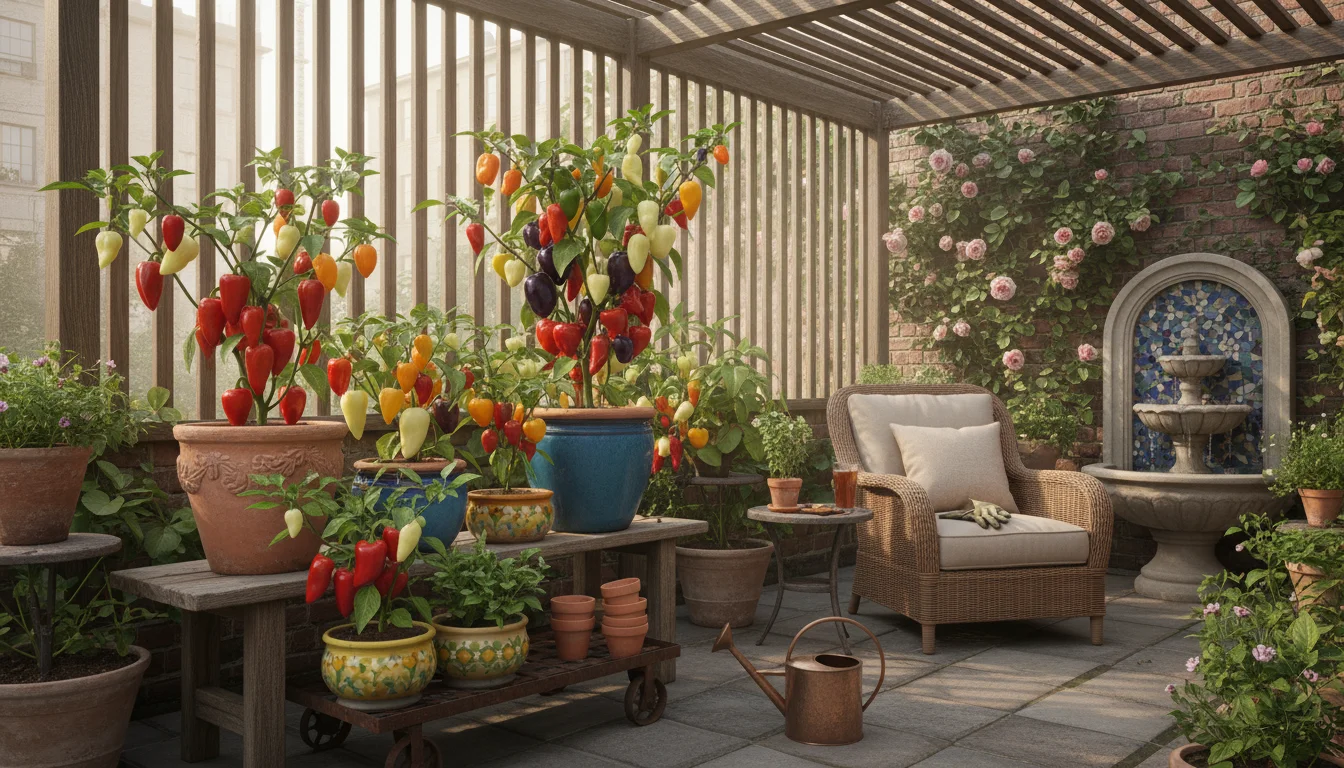
Preparing for Your Final Pepper Harvest
Your pepper plants, whether bell peppers, jalapeños, or exotic chilies, thrive in warm, sunny conditions. As temperatures drop in late summer and early fall, their growth slows, and the ripening process can stall. This is particularly true for plants in containers, which experience temperature fluctuations more dramatically than those planted directly in the ground. The goal for your late season harvest becomes two-fold: protect your plants from cold temperatures and encourage existing fruits to ripen.
The key to successful fall container gardening with peppers lies in proactive planning. Understand that peppers need consistent warmth to transition from green to their mature color. While green peppers are edible, they often lack the full sweetness or heat characteristic of their ripened state. For instance, a green bell pepper offers a crisp, slightly bitter flavor, but a red one provides significantly more sweetness and a higher concentration of Vitamin C. Recognizing these differences empowers you to make informed decisions about your ripening strategies.
Begin by assessing your plants. How many green peppers remain? What size are they? Smaller, immature fruits have less chance of ripening completely, while larger, nearly full-size peppers are excellent candidates for assisted ripening. A careful assessment guides your strategy, ensuring you apply the most effective methods for your specific situation. This active approach increases your success rate in turning those green fruits into a vibrant, flavorful final yield.
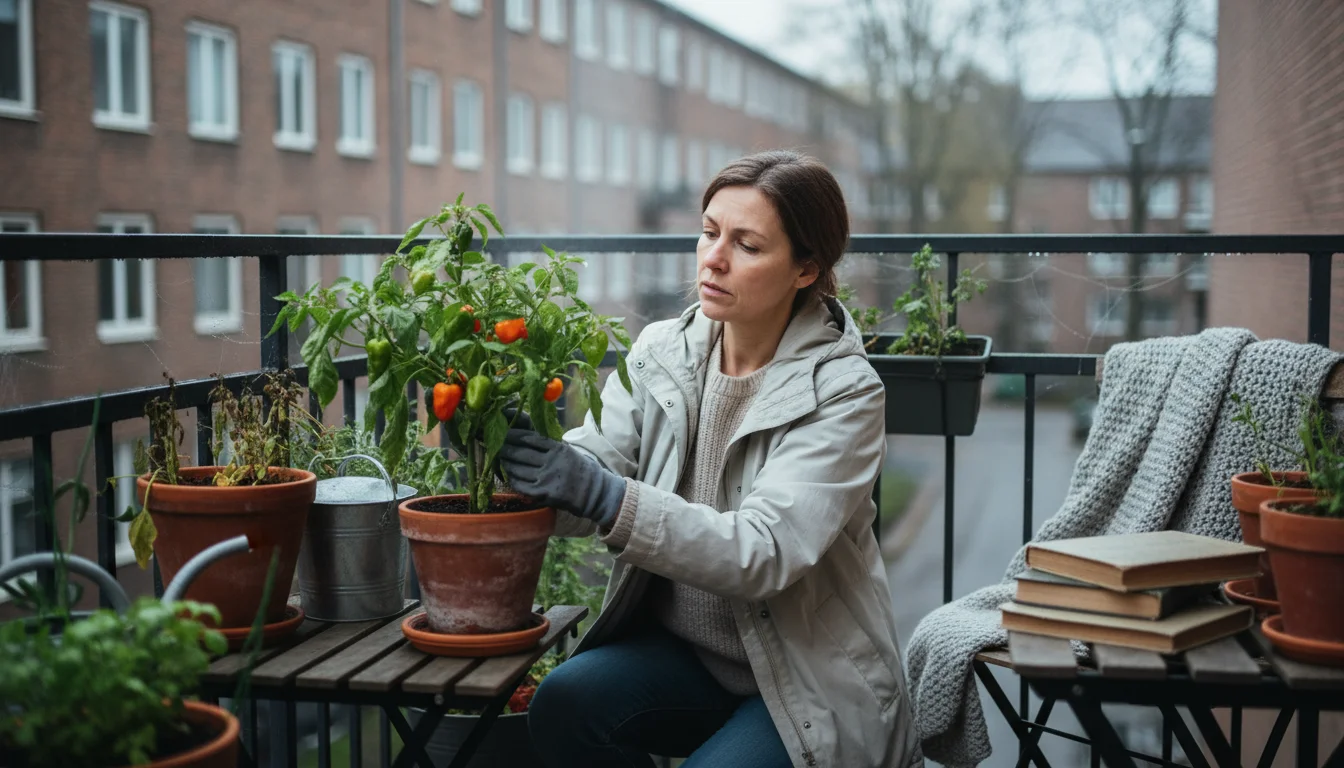
Recognizing the Frost Threat: A Container Gardener’s Guide
Understanding the timing of the first frost is crucial for protecting pepper plants from cold. Frost can quickly damage or kill tender plants like peppers, turning leaves black and rendering fruits unusable. Local weather forecasts provide the most immediate indication, but also observe environmental cues. Nights consistently dropping below 45 degrees Fahrenheit signal danger, even if frost has not yet formed. Actual frost occurs when temperatures hit 32 degrees Fahrenheit or below, causing ice crystals to form on plant surfaces.
Container plants are particularly vulnerable to frost because their root systems lack the insulating protection of the earth. The potting mix cools down faster and freezes more readily than garden soil. This accelerated cooling affects the entire plant, making rapid action necessary. Monitor nighttime temperatures diligently. When forecasts predict temperatures near or below 40 degrees Fahrenheit, or certainly below 35 degrees Fahrenheit, you must take protective measures. A single unexpected cold snap can wipe out weeks of effort. Acting promptly prevents disappointment and secures your late season harvest.
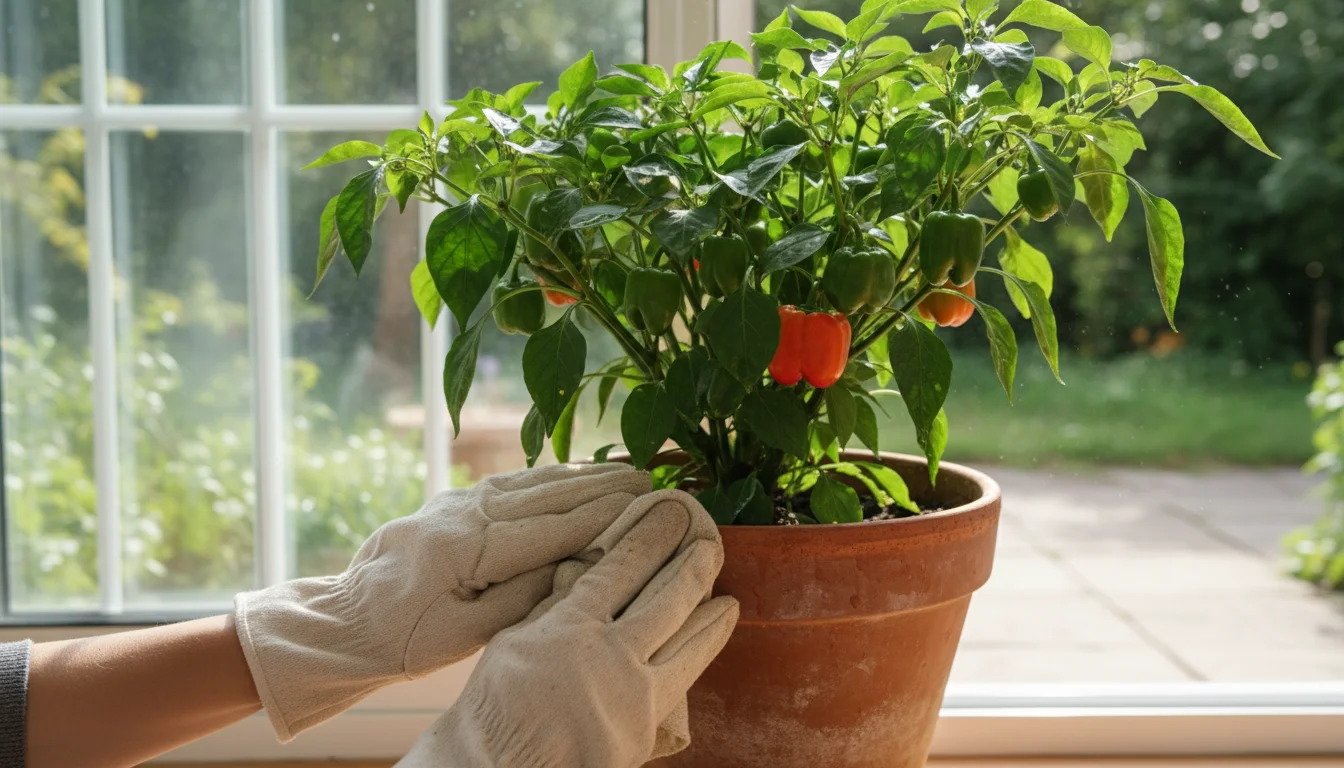
Method 1: Bringing Your Pepper Plants Indoors
One of the most effective ways to encourage ripening peppers and protect pepper plants from cold is to move them indoors. This strategy works exceptionally well for small-space gardeners with container plants. Bringing your potted peppers inside allows them to escape freezing temperatures entirely, providing the consistent warmth they need for their fruits to mature.
Follow these steps for a successful indoor transition:
- Inspect Thoroughly: Before bringing any plant inside, inspect it for pests. Look carefully under leaves, in crevices, and on stems for aphids, spider mites, or other hitchhikers. Treat any infestations with a gentle insecticidal soap or by wiping them off with a damp cloth. This preventative step protects your houseplants from new pest problems.
- Clean the Pot: Wipe down the outside of the container to remove any dirt or debris. This keeps your indoor space clean and reduces the chance of tracking soil or pests inside.
- Prune Selectively: Remove any obviously dead, diseased, or yellowing leaves. Also, snip off any very small, immature peppers that have little chance of ripening. The plant can then direct its energy towards the larger, more developed fruits.
- Provide Light: Peppers need abundant light to ripen. Place your indoor pepper plant in your brightest south-facing window. If natural light is insufficient, supplement with a grow light. A simple LED grow light, available online or at garden centers, provides the necessary spectrum for ripening. Aim for 12-16 hours of light per day.
- Maintain Humidity: Indoor environments, especially with heating systems running, can be very dry. Peppers prefer moderate humidity. You can increase humidity by placing the pot on a pebble tray filled with water, ensuring the pot itself does not sit in the water. Grouping plants together also raises local humidity.
- Water Sparingly: Plants use less water indoors than outdoors. Allow the top inch or two of soil to dry out completely before watering again. Overwatering can lead to root rot.
- Avoid Fertilizing: Do not fertilize your pepper plants once they are indoors for ripening. The goal now is to encourage fruit maturation, not new vegetative growth.
With proper indoor conditions, you will observe how to make green peppers turn red on the plant, or yellow, or orange, as they gradually shift color over several weeks. This method effectively extends your harvest and brings a touch of your garden inside.
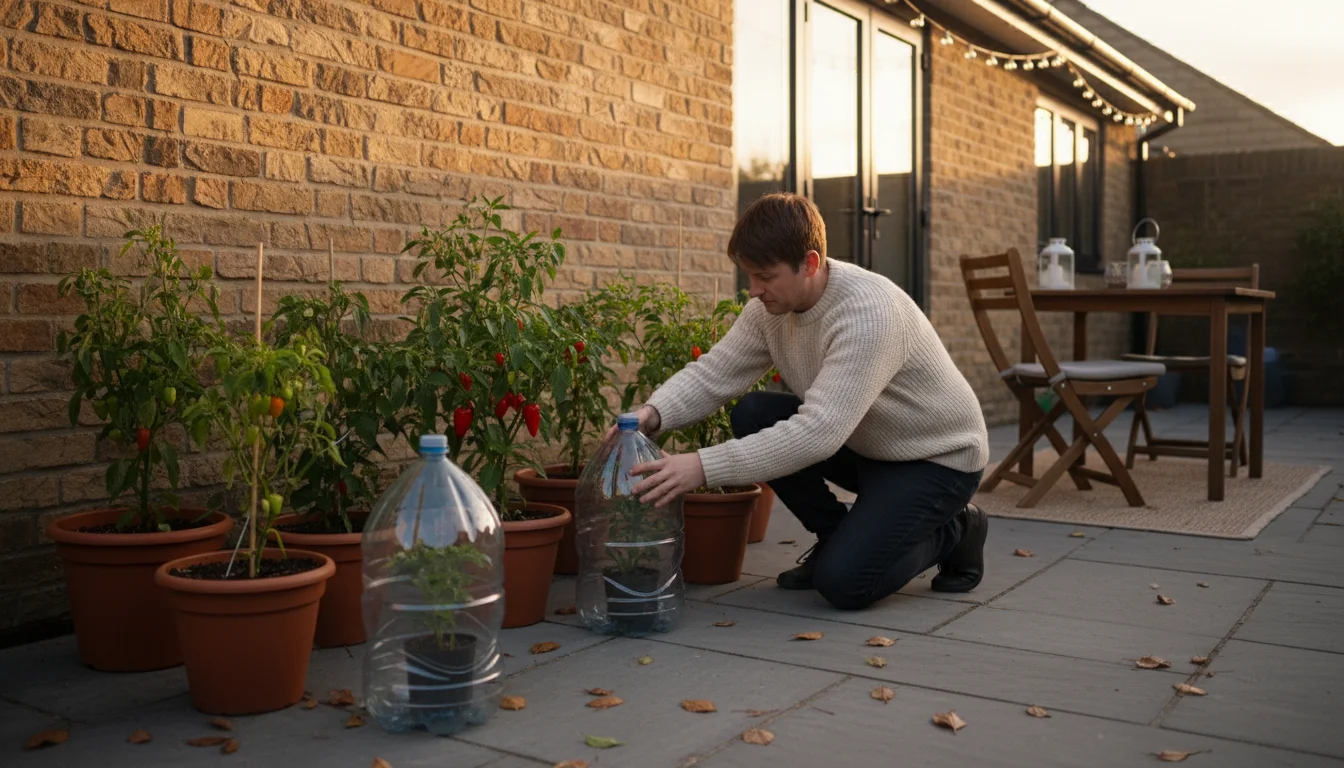
Method 2: Creating a Protective Microclimate
When bringing plants indoors is not feasible, or for milder frosts, you can create a localized protective microclimate around your potted peppers. This strategy helps in fall container gardening by providing crucial insulation and warmth, protecting pepper plants from cold.
Consider these options:
- Move Pots to Sheltered Locations: Relocate your containers to warmer, more protected spots. A south-facing wall, under a porch overhang, or even inside an unheated garage or shed during the coldest nights offers significant protection. The thermal mass of a wall can radiate warmth, and enclosed spaces shield from wind chill and direct frost.
- Use Cloches: A cloche is a bell-shaped or dome-shaped cover placed over individual plants. You can purchase commercial cloches or create your own from repurposed materials. A clear plastic soda bottle with the bottom cut off, or a milk jug with the bottom removed, works well. Place it over the pepper plant in the evening and remove it in the morning once temperatures rise above freezing. This traps ground heat, keeping the plant warmer.
- Implement Row Covers: For multiple potted plants grouped together, a row cover offers broader protection. These lightweight fabric covers allow light and water to penetrate while insulating plants from cold temperatures. Drape the row cover over hoops or stakes placed around your pots, ensuring the fabric does not directly touch the plants. Anchor the edges to prevent wind from lifting it. Row covers can provide 4-8 degrees Fahrenheit of frost protection, significantly aiding ripening peppers during cool snaps.
- Construct a Mini-Greenhouse: Small, portable greenhouses, often made with PVC frames and clear plastic sheeting, are excellent for fall container gardening. These structures create a warmer, more humid environment, which can accelerate ripening. Place your potted peppers inside, ensuring adequate ventilation on warmer days to prevent overheating and fungal issues.
These microclimates trap latent heat from the soil and air, preventing frost from settling directly on the delicate foliage and fruit. They are invaluable tools for extending the harvest in small gardens when outdoor temperatures become marginal.
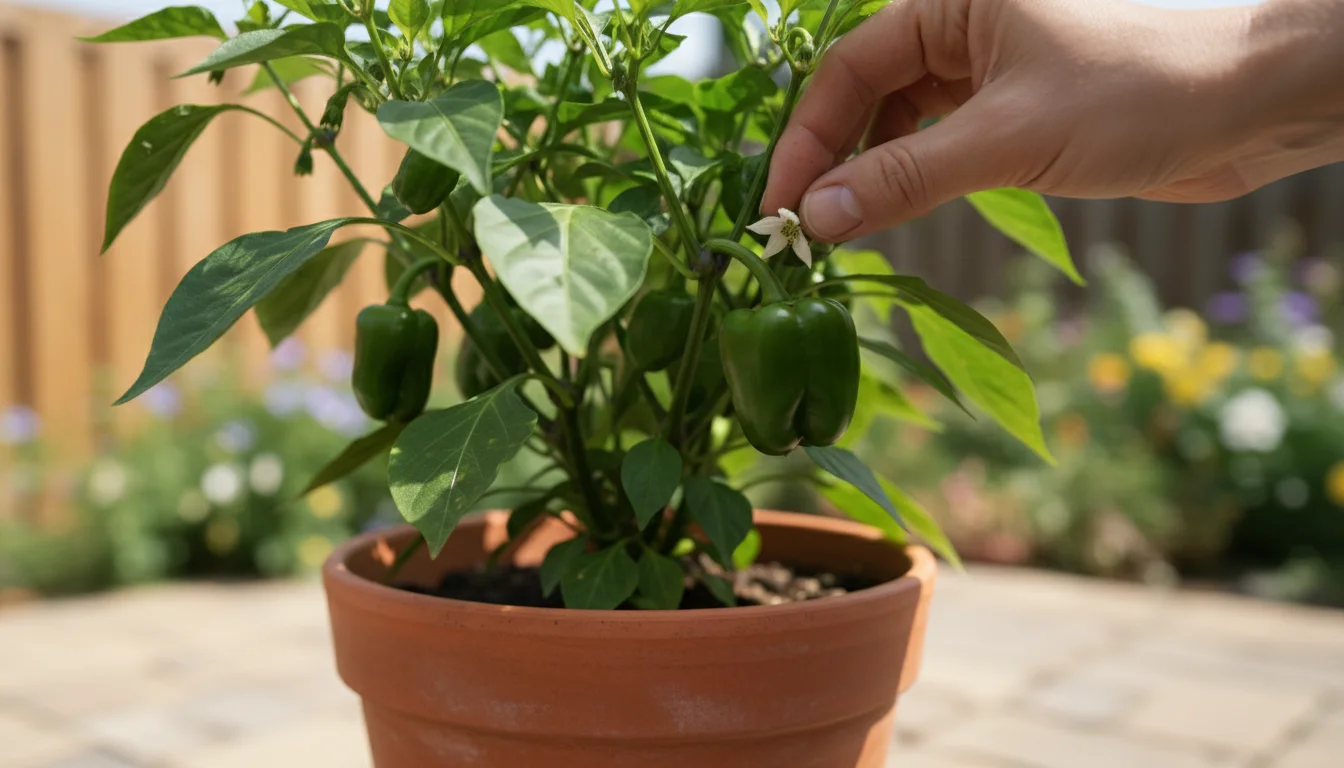
Method 3: Strategic Pruning and Energy Focus
As the season wanes, your pepper plant’s energy naturally shifts from producing new growth and flowers to ripening existing fruits. You can assist this process and encourage how to make green peppers turn red on the plant through strategic pruning. This method redirects the plant’s resources to where they are most needed.
Here is how to apply strategic pruning:
- Remove New Flowers and Small Fruits: Any flowers or tiny fruits that appear late in the season have virtually no chance of maturing before frost. They will only drain the plant’s energy. Pinch these off immediately. This ensures that the plant directs all its available energy towards the larger, more developed fruits that have a real possibility of ripening.
- Prune Back Vegetative Growth: Cut back some of the leafy, non-fruiting branches. This exposes existing peppers to more sunlight and improves air circulation, both of which can aid ripening. Be judicious with pruning; you still need enough foliage for photosynthesis, but removing excess leaves helps. Aim for about 20-30% of the non-fruiting foliage. This concentrated energy helps ripening peppers mature faster.
- Top the Plant (Optional): For plants with many small peppers, consider “topping” them a few weeks before the anticipated first frost. This involves cutting off the main growing tip of each stem. Topping encourages the plant to stop vertical growth and instead funnel energy into ripening the existing fruits. This is particularly useful for varieties that produce an abundance of smaller peppers, promoting a more uniform late season harvest.
By focusing the plant’s energy, you enhance its ability to complete the ripening process, especially for those green peppers poised for a color change. This method is a direct way to influence how to make green peppers turn red on the plant, improving both the quantity and quality of your final yield.
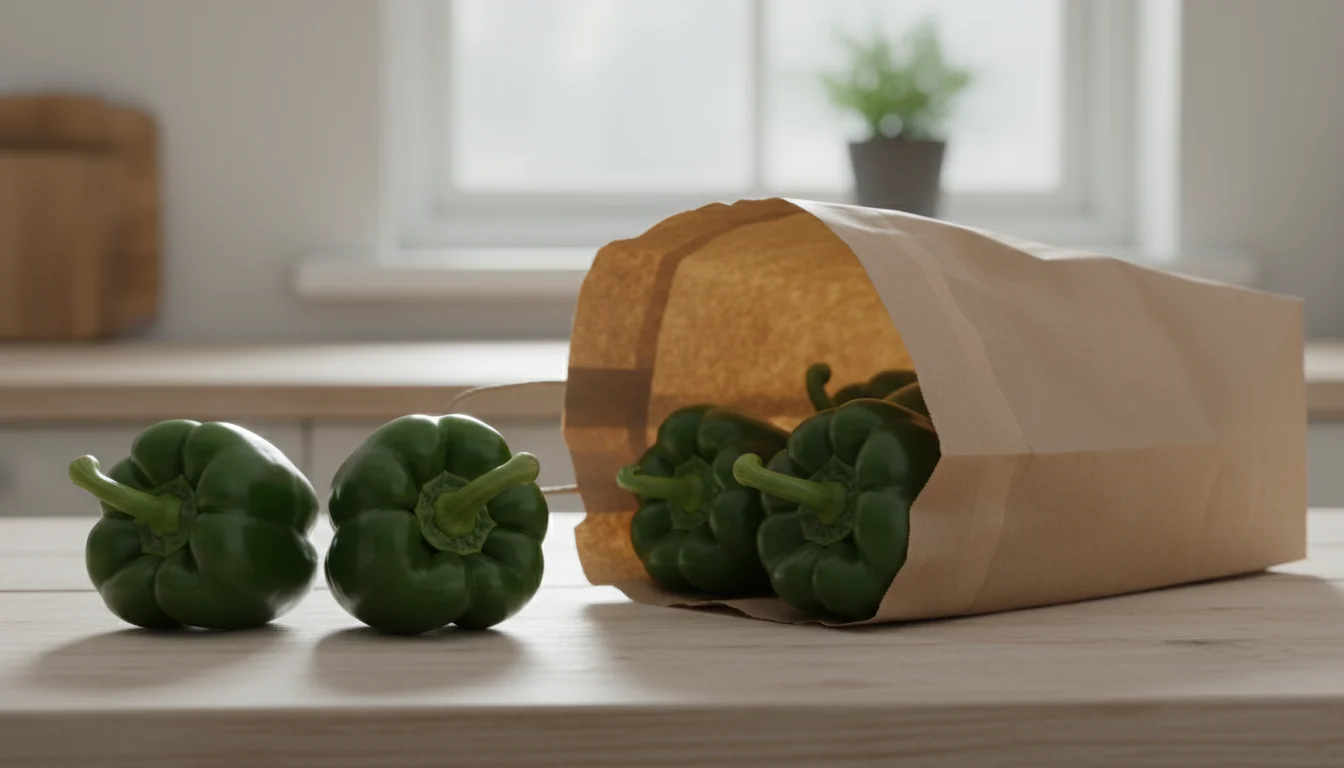
Method 4: Harvesting and Ripening Off the Plant
Sometimes, despite your best efforts, the first hard frost arrives before all your peppers have ripened on the plant. Do not despair. You can still salvage a significant portion of your late season harvest by ripening peppers off the plant. This method is surprisingly effective and ensures you do not waste your hard-earned bounty.
Here are the steps for off-plant ripening:
- Harvest All Mature Green Peppers: Before the frost hits, pick all your green peppers that have reached their full size, even if they show no signs of color change. Use sharp pruners or scissors to cut the stem, leaving a small piece attached to the pepper. This prevents damage and reduces the risk of rot.
- Clean the Peppers: Gently wipe any dirt or debris from the harvested peppers. Ensure they are dry before storage.
- Select a Warm Location: Peppers need warmth to ripen, even off the plant. Place your green peppers in a single layer in a warm spot, ideally between 65 and 75 degrees Fahrenheit. A sunny windowsill works, but a paper bag in a warm room is often more consistent. Avoid direct, intense sunlight, as it can cause them to shrivel.
- Use the “Paper Bag” Method: Place the peppers in a paper bag. The bag traps ethylene gas, a natural plant hormone that promotes ripening. You can accelerate this process by adding an ethylene-producing fruit, such as a ripe apple or banana, to the bag with the peppers. The apple or banana releases ethylene, signaling the peppers to ripen faster.
- Monitor Regularly: Check the peppers daily. As they ripen, their color will change. Remove any peppers that show signs of softening or rotting to prevent them from affecting others.
- Patience is Key: Ripening peppers off the plant takes time, often several days to a few weeks, depending on the pepper variety and its initial maturity. You might not achieve the same vibrant color and flavor as sun-ripened peppers, but they will still be delicious and perfectly edible.
This technique is a lifesaver for extending the harvest in small gardens, allowing you to enjoy your peppers even after the growing season has officially ended outdoors. It maximizes your yield and reduces waste from early frosts.
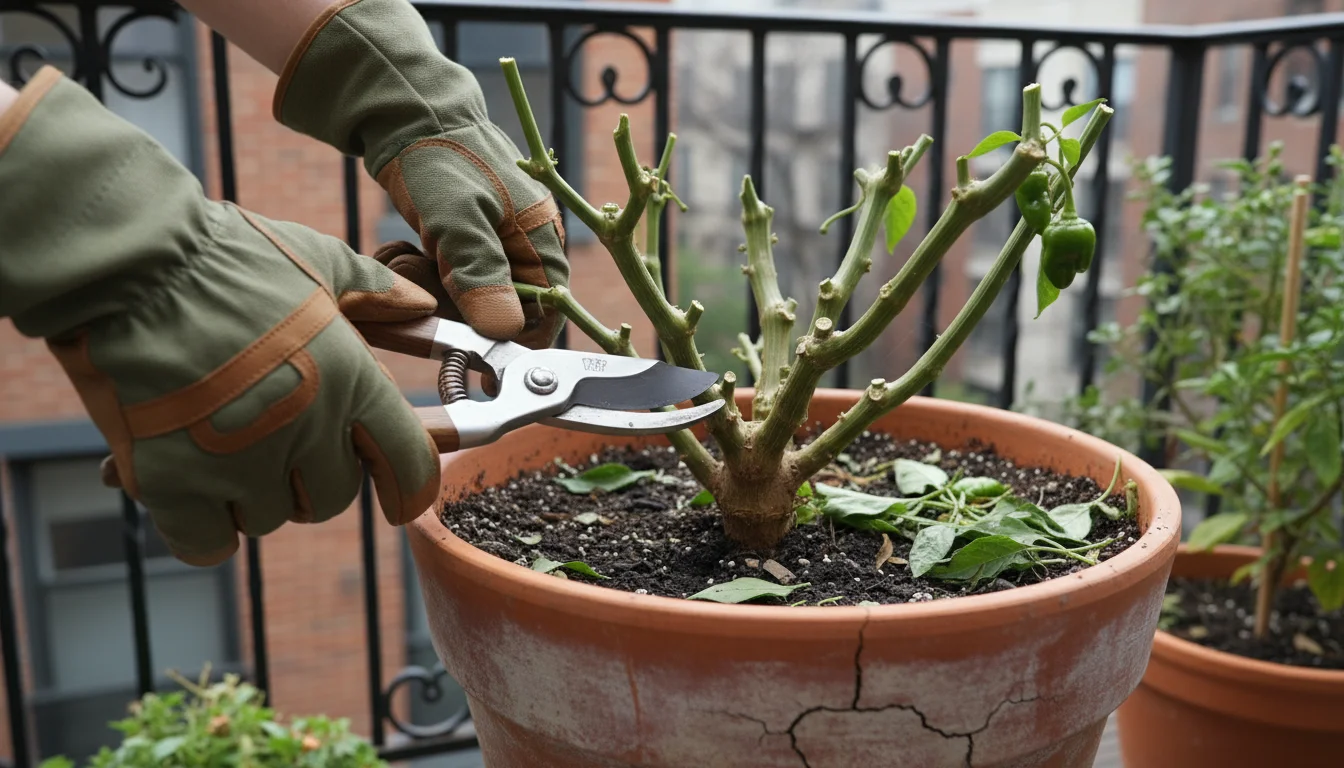
Method 5: Overwintering Your Pepper Plants
While technically not a method for ripening your *final* harvest, overwintering your pepper plants in containers offers a fantastic way to extend the harvest in small gardens into *next* season. It means you get a head start in spring, with larger, more robust plants that produce earlier and more abundantly. This advanced technique saves your established plants from the cold, allowing them to produce another year.
Here is how to overwinter your potted pepper plants:
- Harvest All Peppers: Before the first hard frost, strip your plants of all remaining peppers, ripe or unripe. You can ripen the green ones off the plant using Method 4.
- Prune Aggressively: Cut back the plant significantly. Remove all foliage, leaving only the main stems with a few nodes. Aim to reduce the plant’s size by 50-75%. This minimizes the energy needed for maintenance during dormancy.
- Inspect and Treat for Pests: Just like bringing plants indoors, thoroughly inspect for pests. Treat any infestations to avoid bringing unwanted guests into your home.
- Repot (Optional): If your plant is in a very large container, you might consider repotting it into a smaller pot for the winter, especially if space is limited. Use fresh, sterile potting mix if repotting.
- Choose a Cool, Dark Location: Unlike ripening indoors, overwintering requires a cool, dormant state. Place the pruned plant in a cool, dark, frost-free location where temperatures remain consistently between 45 and 60 degrees Fahrenheit. An unheated garage, shed, or basement often works well.
- Water Sparingly: During dormancy, the plant needs very little water. Water just enough to prevent the potting mix from completely drying out, perhaps once every 2-4 weeks. The goal is to keep the roots alive, not to encourage active growth.
- Monitor for Pests and Diseases: Check your overwintering plants periodically for signs of pests or fungal issues. Address any problems immediately.
- Reintroduce in Spring: As spring approaches and temperatures rise, gradually reintroduce your pepper plant to light and warmth. Increase watering, and once new growth appears, you can begin light fertilization. Harden off the plant before moving it permanently outdoors after the last frost date.
Overwintering is an excellent strategy for dedicated container gardeners, particularly for favorite or heirloom varieties. It provides a significant advantage for your next growing season, effectively extending your overall pepper production cycle.
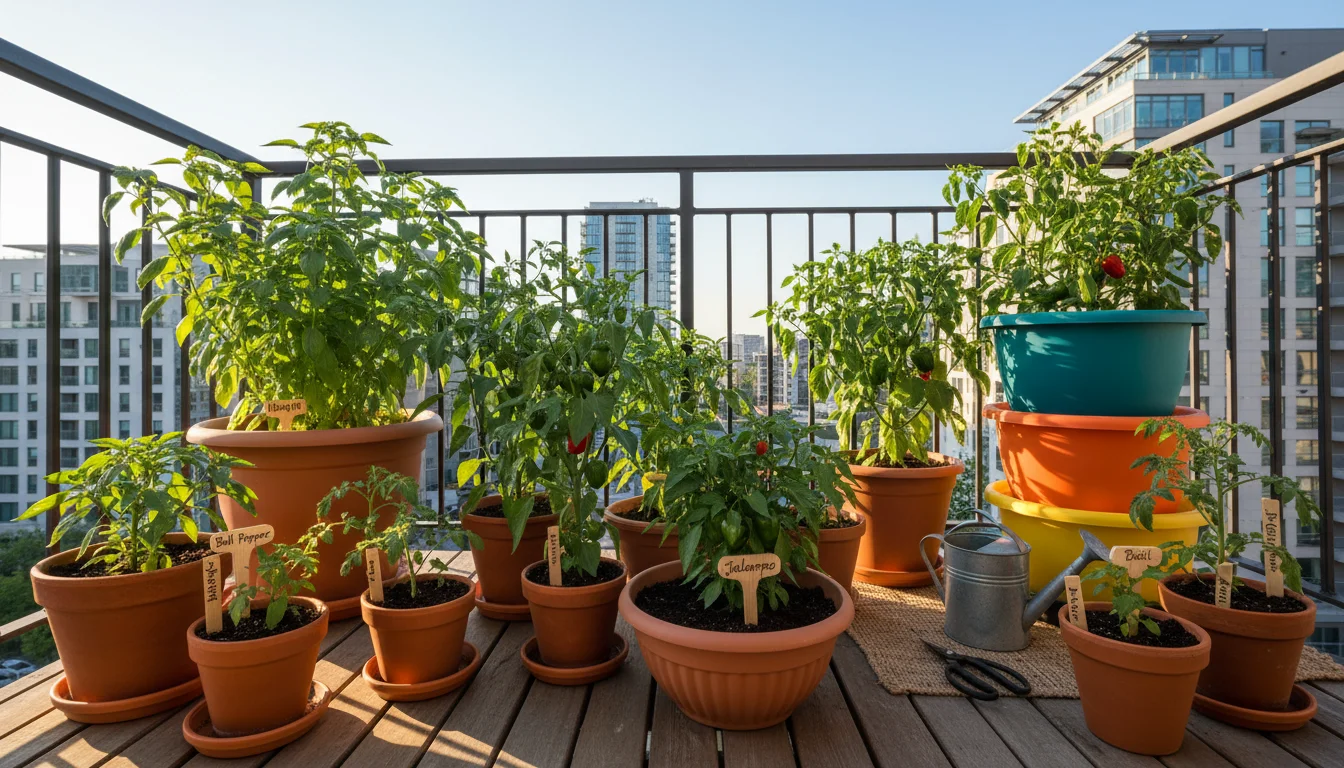
General Tips for Extending Your Pepper Season
Beyond these five primary methods, several general practices enhance your success with ripening peppers and protecting pepper plants from cold, especially in a fall container gardening context. These tips contribute to a healthier plant, which is more resilient to cooler temperatures and more efficient at ripening its fruits.
* Choose the Right Varieties: For fall container gardening and a late season harvest, select pepper varieties known for shorter maturity times or those that ripen quickly. For example, some early bell pepper varieties or smaller chili types mature faster than large, thick-walled peppers. Plan ahead in future seasons to plant varieties better suited for regions with shorter growing seasons.
* Optimize Container Size and Placement: Ensure your peppers grow in adequately sized containers, typically at least 5 gallons for optimal growth and root health. Dark-colored pots absorb more solar heat, which can be beneficial in cooler weather. Position pots in the sunniest, most sheltered spot possible, especially as the sun’s angle changes in fall.
* Maintain Soil Health: A healthy potting mix supports a healthy plant. Use a high-quality, well-draining, peat-free potting mix. Good soil aeration and nutrient availability make the plant more robust and better equipped to handle stress. Avoid compacted soil, which hinders root function.
* Efficient Watering Practices: While peppers need consistent moisture, overwatering in cooler temperatures can lead to root rot. Allow the top inch or two of the potting mix to dry out before watering deeply. In fall, plants generally require less water than in the heat of summer. Efficient watering conserves resources and promotes plant health.
* Consider Windbreaks: Wind chill significantly impacts container plants. Even a simple barrier like a row of other plants, a trellis, or a temporary screen can reduce wind exposure, keeping the plant warmer and allowing it to focus energy on ripening peppers.
* Reflective Mulch: For very late-season plants, placing reflective mulch, such as aluminum foil or white plastic sheeting, around the base of the plant can reflect sunlight upwards. This increases light exposure to the undersides of leaves and fruits and helps warm the soil, encouraging ripening.
* Provide Adequate Drainage: Regardless of the season, proper drainage is critical for potted plants. Ensure your containers have ample drainage holes to prevent waterlogging, which can stress plants and make them more susceptible to cold damage.
* Support Pollinators: While ripening focuses on existing fruits, remember that pollinator support earlier in the season is vital for fruit set. Encourage local pollinators by planting diverse flowers, even in small spaces. A thriving ecosystem leads to a more abundant harvest from the start, reducing the pressure for a frantic late season harvest.
By implementing these general tips, you create a more resilient growing environment for your peppers, maximizing your chances for a successful and prolonged harvest well into the cooler months. These practices contribute significantly to extending the harvest in small gardens, making your gardening efforts more rewarding.
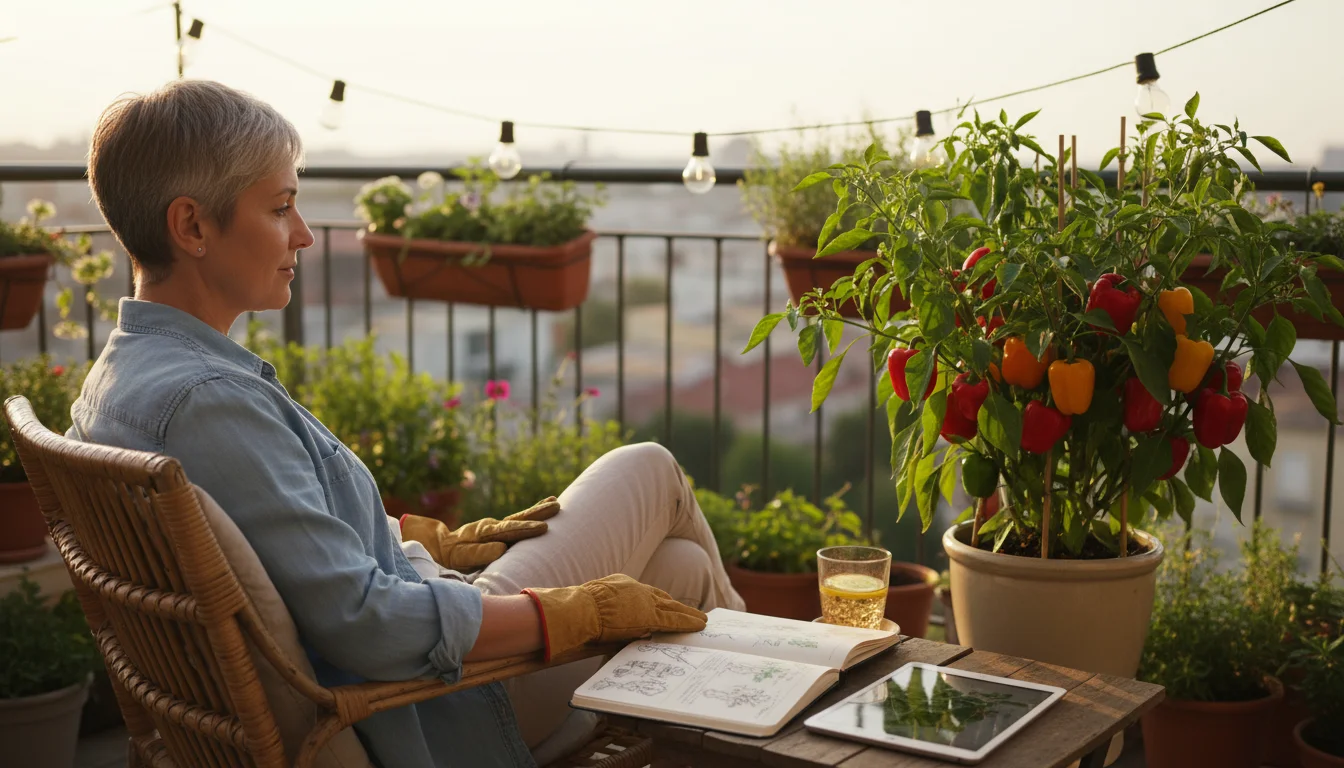
Frequently Asked Questions
Will green peppers ripen after I pick them?
Yes, many green peppers will continue to ripen off the plant, especially if they have reached their full size and have begun to show any hint of color change. Place them in a warm location, ideally in a paper bag with a ripe apple or banana, to speed up the process by trapping ethylene gas.
What temperature kills pepper plants?
Pepper plants are very sensitive to cold. Temperatures consistently below 40 degrees Fahrenheit (4 degrees Celsius) can stress them significantly, stopping growth and ripening. A hard frost, which occurs at 32 degrees Fahrenheit (0 degrees Celsius) or below, typically kills unprotected pepper plants, damaging foliage and fruit.
How can I make my pepper plants produce more before frost?
To maximize production before frost, focus the plant’s energy on existing fruits. Pinch off any new flowers or very small, immature peppers that will not have time to ripen. This redirects the plant’s resources to developing and ripening the larger peppers already on the plant, improving your late season harvest.
Can I overwinter bell pepper plants indoors?
Yes, you can successfully overwinter bell pepper plants indoors. This involves pruning them heavily, providing a cool, dark, and frost-free location, and watering very sparingly through the winter. This allows the plant to go dormant and then revive in the spring for an earlier and more abundant harvest next season.
Do pepper plants need full sun to ripen?
Peppers absolutely need full sun, at least 6-8 hours daily, to ripen effectively. Sunlight provides the energy for photosynthesis, which is essential for fruit development and the production of pigments that give peppers their mature colors. Insufficient light will significantly slow or halt the ripening process.
For research-based guidance on edible gardening, visit
University of Arizona Cooperative Extension — Gardening,
University of Alaska Fairbanks Extension — Gardening,
University of Georgia Extension — Gardening and
Louisiana State University AgCenter — Lawn & Garden.
Disclaimer: This article is for informational purposes only and is not a substitute for professional advice. Consult local extension services for region-specific recommendations.
